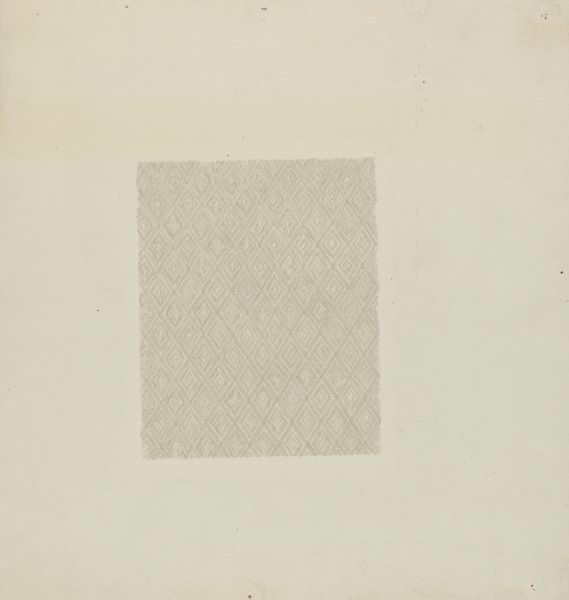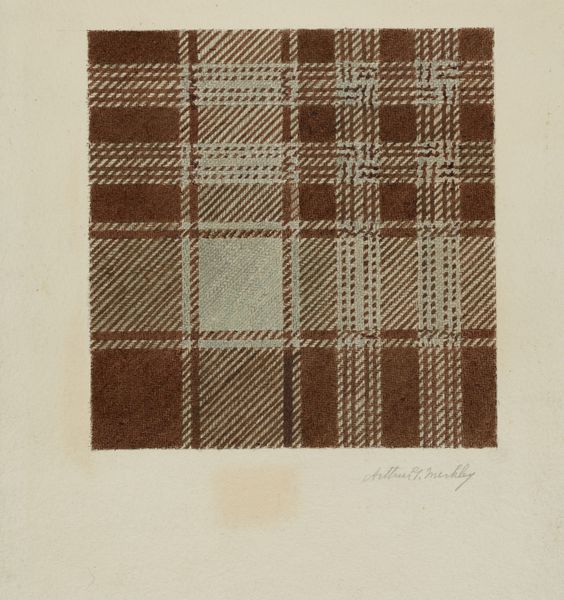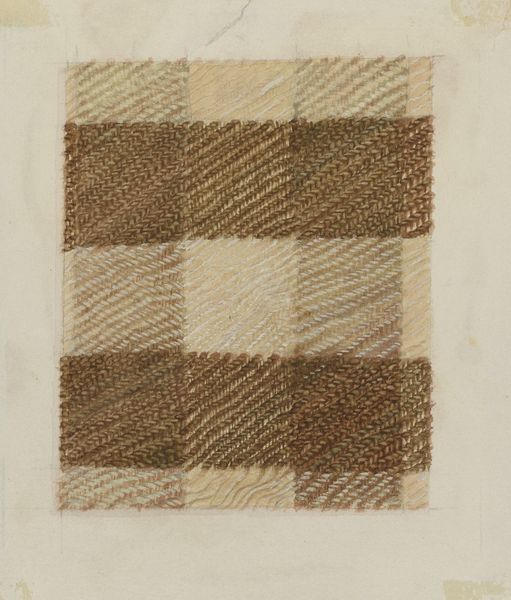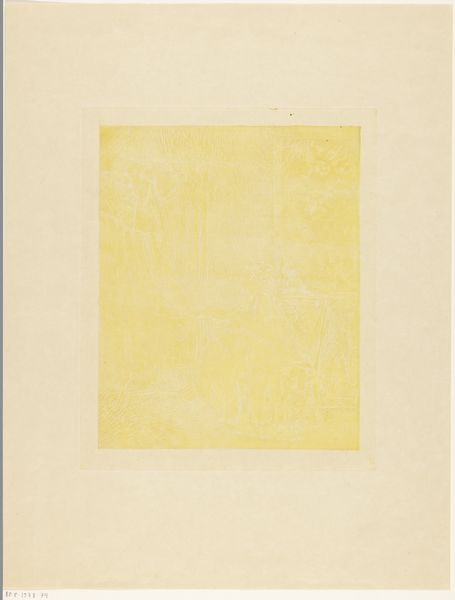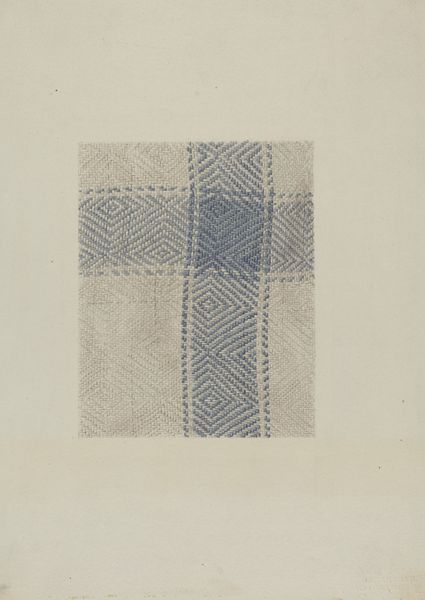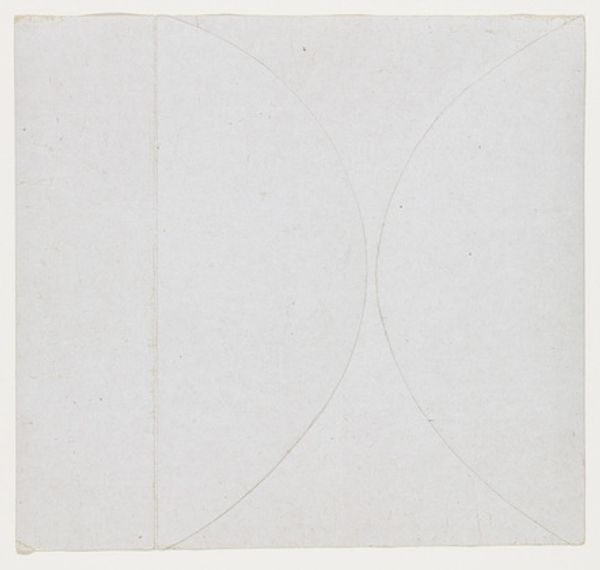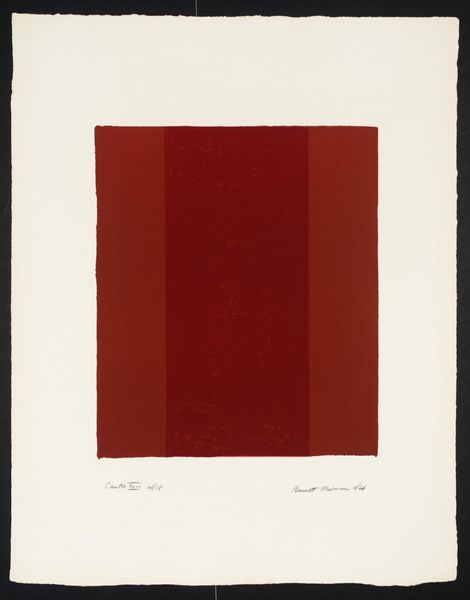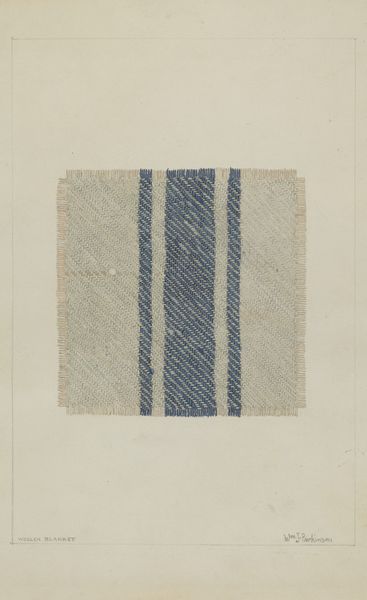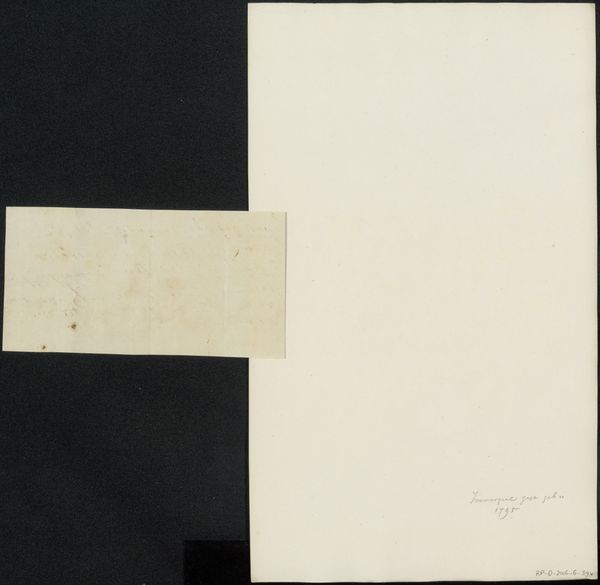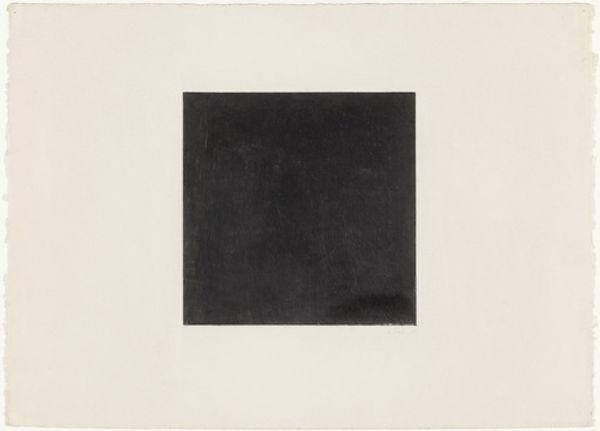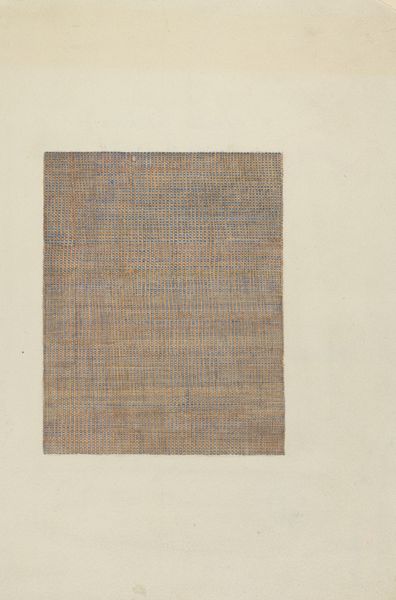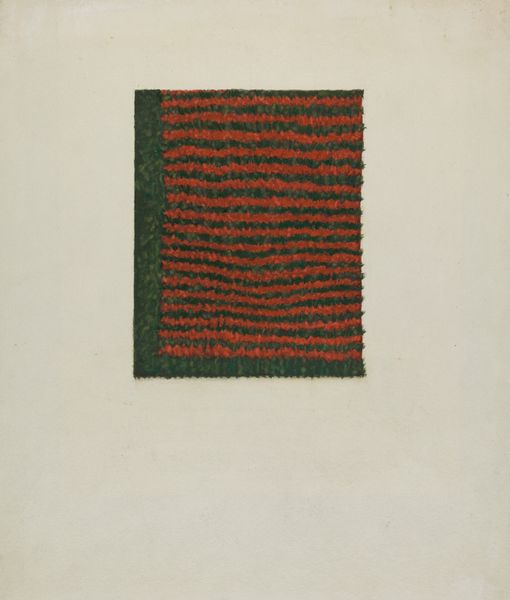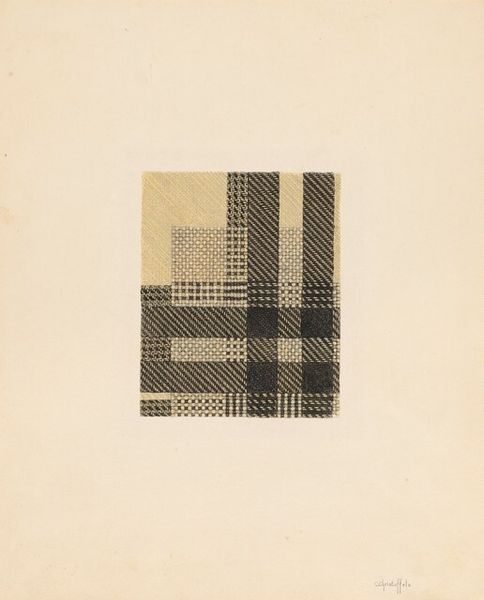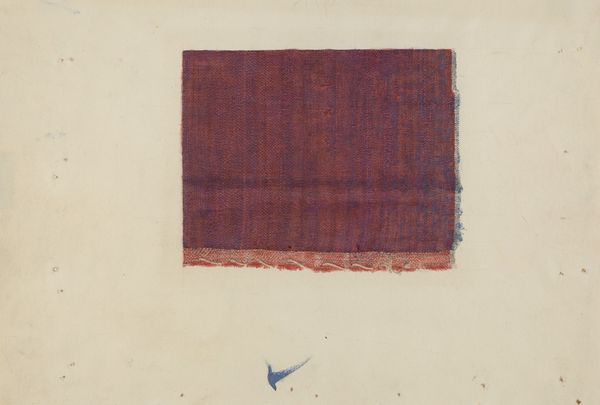
drawing, textile, paper
#
drawing
#
textile
#
paper
#
geometric
#
abstraction
#
line
Dimensions: overall: 22.9 x 24.1 cm (9 x 9 1/2 in.)
Copyright: National Gallery of Art: CC0 1.0
Curator: Welcome. Here we have "Shaker Textile," created around 1936, presented as a drawing on paper. The artwork immediately brings to mind themes of functionality and simplicity. Editor: Immediately, I notice the texture rendered entirely in line—it seems to represent a woven textile sample, with an impressive commitment to replicating materiality through repetitive mark-making. It's deceptively simple; you have to look closely to appreciate the craft. Curator: The Shakers, as a religious sect, placed significant value on labor and the making of functional goods. They were known for their minimalist design aesthetic and utopian communities. This piece embodies those ideals; a potential textile design becomes an exercise in simple utility. Editor: Exactly. One could almost trace the steps. This work emphasizes the sheer labor of creating textiles. Also, given that it’s on paper, it makes one wonder: is it a design? A record? A commentary on production itself? The paper's surface bears the mark of intention but shifts its status as "art object". Curator: Perhaps all of the above. It reflects how art institutions now examine such artifacts within larger cultural contexts, moving past old assumptions. Once such objects were deemed ‘craft’ or ‘design’ rather than ‘art,’ reflecting social hierarchies about artistic labor and intent. Editor: That distinction is crucial. We need to reconsider those categories and see them as interconnected. It brings up broader questions about who made it, for what purpose, and within what system of production. Were such drawings typical or uncommon in the Shaker community? What were the divisions of labor between women and men in the creation process? Curator: It serves as a valuable entry point. What this shows, if nothing else, is how we have moved far beyond merely admiring objects on display to deconstructing larger social dynamics implicit to art making. Editor: I think so too. Looking closely, we've considered the intricate dance between material, labor, and meaning woven into this simple seeming piece.
Comments
No comments
Be the first to comment and join the conversation on the ultimate creative platform.
